Things are never perfect on site – you have to deal with it and end up with a great result.
On this page you're going to discover three more tips the great finish carpenters use daily.
First let's take a look at what to do when you come across a difference in floor height.
Make Blocks For Transition Points
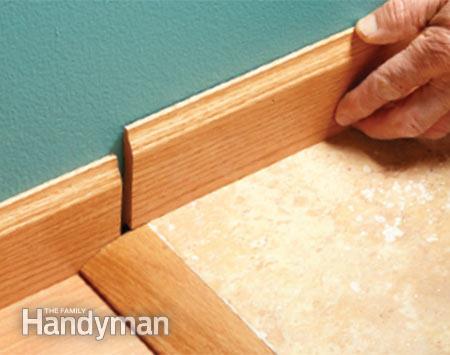
The problem is that different floor height can cause an ugly baseboard joint. One solution is to use transition blocks.
“Used tastefully, transition blocks can be a real problem solver for finish carpenters. Rather than struggling to align moldings or fudging to match profiles, you can make a nice transition with a decorative block. You can buy ready-made blocks, but it’s easy to make your own. Cut the block to the height and width you think look good. Then cut or rout the top or add a small molding to complement your trim style. Use transition blocks where stair skirts intersect baseboards, where floor levels change, or at the bottom of door casings where the baseboard is thicker than the casing.
How To Handle Large Bumps In A Wall
There can be a few reasons for these large bumps in walls. It might be some garbage behind the drywall. It could also be a wall stud that isn't nailed in the right place.
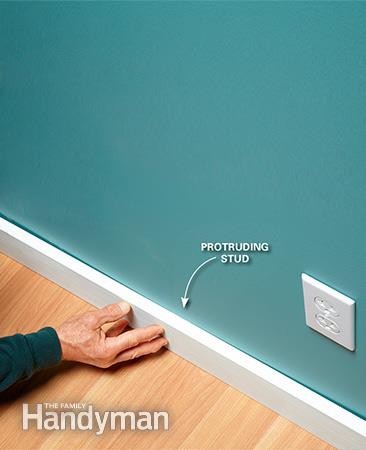
Careful framing is the key to easy trim installation. But in the rush to get the walls put up, framing carpenters sometimes get a little sloppy. A stud that’s not lined up with the plate causes a big hump in the wall, making it difficult to get the baseboard tight. But if you’re courageous enough to cut into your wall, the fix is simple. Start by cutting out a little chunk of drywall right at the hump to see what the problem is. There could just be a chunk of drywall or other debris trapped between the drywall and the bottom plate. Or the stud could be misaligned. If this is the case, see the second photo for the solution.
Clean The Excess Drywall Mud From The Corners
This is a job that just has to be done. The ideal time to do it is when the mud is being scraped off the floor. If you don't do it the baseboard joints will be hard to make perfect due to the tilting and rocking of the baseboards.
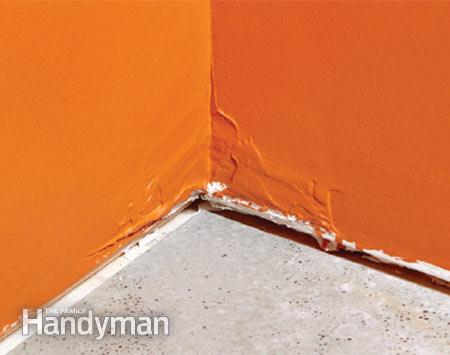
Even careful drywall tapers can end up with an accumulation of joint compound near the bottom of inside corners. The problem is that all that extra mud prevents the baseboard from fitting well. The trick is to scrape off the buildup before you start installing the base. You can use a small pry bar with a sharp edge, a dull chisel or a stiff putty knife scraper. Before you start scraping, mark the top of the baseboard on the wall. Then scrape below the line where it won’t show.
For more great tips go to the source article
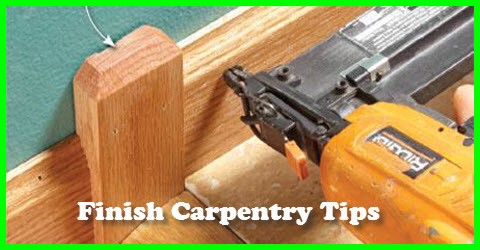
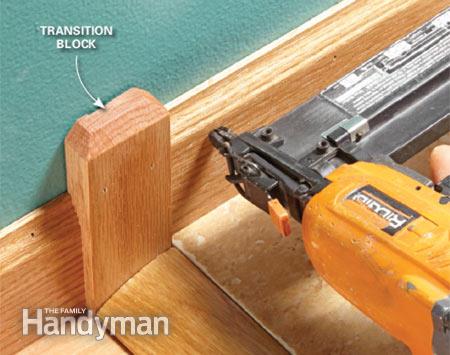
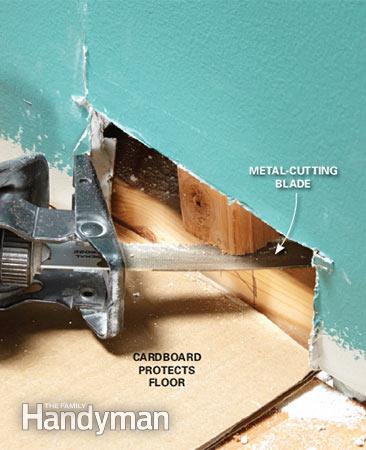
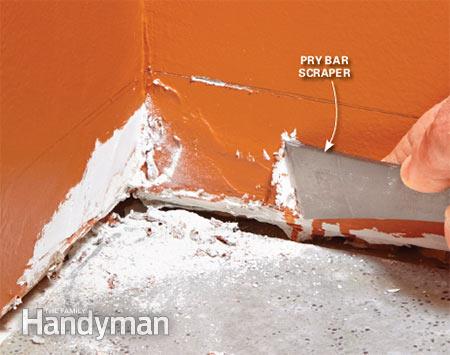

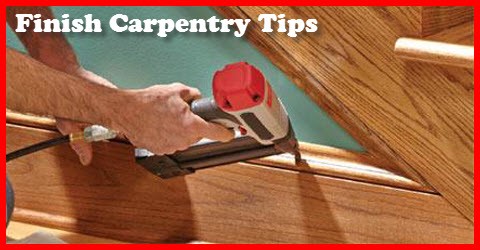
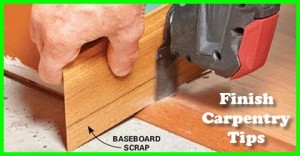
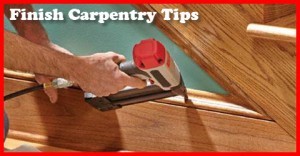
Hello blogger, i found this post on 25 spot in google’s search results.
You should reduce your bounce rate in order to rank in google.
This is major ranking factor nowadays. There
is very handy wp plugin which can help you. Just search in google
for:
Sisonum’s Bounce Plugin